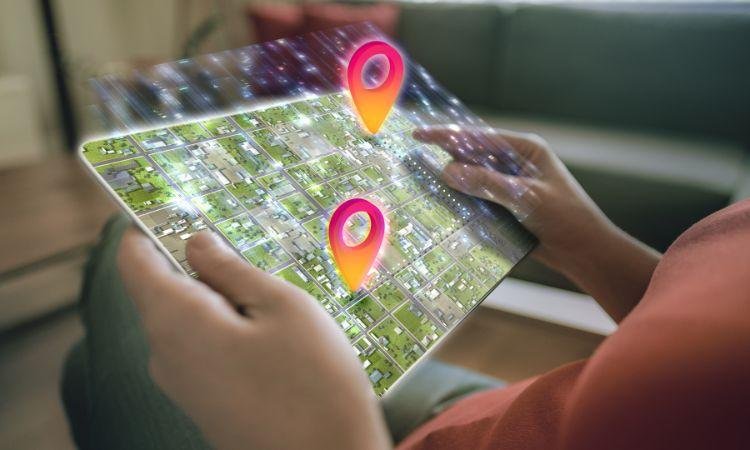The global digital map market size is experiencing rapid growth, driven by technological advancements and an increasing reliance on digital navigation solutions. With a compound annual growth rate (CAGR) of 13.90% projected for the period of 2024-2032, the market is expected to reach a value of around USD 37.79 billion by 2032. This remarkable growth is primarily fueled by the rising demand for digital maps in the automotive sector and the widespread usage of mobile devices. In this blog post, we will delve into the various segments of the digital map market, regional analyses, competitive landscapes, and future trends.
Market Overview
Digital maps have transformed how we navigate and interact with our environment. Unlike traditional paper maps, digital maps provide dynamic and interactive features that enhance user experience. The evolution of technologies such as GPS, GIS (Geographic Information Systems), and real-time data integration has made digital maps indispensable tools across various sectors, including automotive, government, and utilities.
The growing importance of location-based services (LBS) is a significant driver behind the expansion of the digital map market. Businesses and consumers increasingly rely on accurate and updated mapping solutions for navigation, logistics, and planning. As smart city initiatives gain traction and urban populations continue to rise, the demand for effective mapping solutions is more pronounced than ever.
Market Size and Share
The digital map market has witnessed substantial growth in recent years, characterized by a marked increase in user adoption and technological advancements. With a current estimated market size in the billions, the projected growth signifies a robust shift towards digital navigation solutions. The factors contributing to this growth include enhanced smartphone penetration, increased investment in smart infrastructure, and the proliferation of IoT (Internet of Things) devices.
Key statistics reveal the impact of these trends, illustrating how businesses and consumers alike are moving towards digital mapping for efficiency and convenience. The COVID-19 pandemic further accelerated this shift as remote work and e-commerce surged, increasing the need for precise location data.
Market Segmentation
Understanding the digital map market requires a closer look at its various segments.
A. By Type
Software Solutions: This segment encompasses a range of applications, including mapping software, visualization tools, and data analytics platforms. Companies are increasingly adopting sophisticated software solutions to leverage mapping data for strategic planning and decision-making.
Maps: Digital maps come in various forms, including satellite imagery, topographic maps, and street maps. This diversity allows users to choose the most suitable map type for their specific needs. Major players in this segment, such as Google Maps and HERE Technologies, continue to enhance their offerings through innovative features.
Services: Mapping services, including consulting, customization, and technical support, play a critical role in the market. Organizations are seeking expert guidance to integrate mapping solutions into their operations effectively.
B. By Functionality
Computerized: Computerized digital maps offer advanced features such as real-time updates and interactive capabilities. These maps are integral to various applications, from logistics to urban planning.
Scientific: Scientific mapping serves research purposes, offering insights into geographical trends and environmental changes. This functionality is essential for academic institutions and research organizations.
GPS Navigation: GPS-enabled navigation systems are ubiquitous in personal and commercial vehicles. This segment continues to expand as automotive technology advances, particularly with the rise of autonomous vehicles.
C. By Applications
Indoor Applications: Digital maps are increasingly utilized in indoor settings, such as shopping malls, airports, and large venues. These applications help users navigate complex spaces, enhancing the overall experience.
Outdoor Applications: Outdoor digital maps cater to a wide range of activities, including hiking, urban exploration, and navigation for logistics. The growing popularity of outdoor activities further fuels demand in this segment.
D. By End Use
Government and Utilities: Governments leverage digital mapping for urban planning, infrastructure development, and disaster management. Utility companies use mapping solutions to optimize service delivery and maintenance.
Automotive: The automotive sector is a key driver of digital map market growth, with GPS navigation systems becoming standard in vehicles. As autonomous vehicle technology progresses, the demand for accurate and real-time mapping solutions is expected to surge.
Others: Emerging sectors, including healthcare and agriculture, are also beginning to utilize digital mapping solutions, broadening the market’s reach.
Regional Analysis
The digital map market exhibits varying growth rates across regions. North America remains a leader in market share, driven by technological innovation and high adoption rates of smart devices. Europe follows closely, with significant investments in smart city initiatives enhancing the demand for digital mapping solutions.
In the Asia-Pacific region, rapid urbanization and increasing smartphone penetration are fueling market growth. Countries like China and India are witnessing a surge in digital map adoption, particularly in logistics and transportation sectors. Latin America and the Middle East & Africa are also emerging markets, with increasing investments in infrastructure and technology driving demand.
Competitive Landscape
The competitive landscape of the digital map market is characterized by a mix of established players and emerging startups. Key companies such as Google, HERE Technologies, and TomTom dominate the market with their comprehensive mapping solutions and innovative technologies.
Recent developments, including partnerships and acquisitions, reflect the industry’s dynamic nature. Companies are focusing on enhancing their offerings through advanced features such as augmented reality (AR) and machine learning algorithms, which improve mapping accuracy and user experience.
Future Outlook
As we look toward the future, several trends are poised to shape the digital map market. The integration of AI and machine learning into mapping solutions will lead to more accurate and efficient services. Additionally, the increasing importance of environmental sustainability will drive demand for mapping solutions that support eco-friendly initiatives.
However, challenges remain, including data privacy concerns and the need for continuous updates to mapping data. Companies that can navigate these challenges while leveraging emerging technologies will be well-positioned to succeed in the evolving digital map landscape.



More Stories
Tax Benefits of Using Virtual Offices
What Are Industrial Cable Glands and How Do They Work?
Benefits of Reviewing PTE Mock Test Results